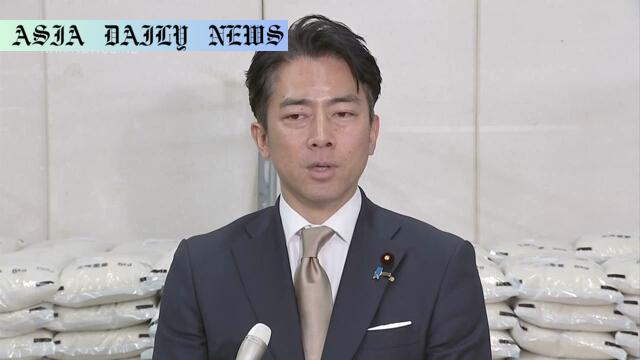rice distribution: Japan’s agriculture minister vows to review the nation’s outdated rice supply chain system to tackle price surges.
- The Japanese Agriculture Ministry aims to address surging rice prices through system reviews.
- Distribution is controlled largely by the JA Group, leading to inefficiencies.
- A retail executive calls for reducing intermediary layers in the supply chain.

Transparency in Japan’s Rice Distribution System
Japan is grappling with surging rice prices, a staple food that forms the foundation of its culinary culture. Agriculture Minister Koizumi Shinjiro has acknowledged the problem and pledged to review the rice distribution system in a bid to alleviate the financial burden on consumers. Recent reports suggest the current supply chain, dominated by the JA Group, suffers from inefficiency and a lack of transparency. These shortcomings contribute significantly to rising prices, doubling within the span of a year.
A Closer Look at the Supply Chain Problem
Retailer President Yoshida Naoki of Don Quijote outlets has highlighted the issue in communication with the agricultural ministry. The JA Group, which controls the majority of rice crop distribution, moves the product through a layered intermediary system. After reaching wholesalers, the rice passes through several additional tiers of brokers, each adding profit margins. This outmoded system, according to Yoshida, is the very reason behind inflated prices in retail stores. He emphasizes that reforming this archaic system is the preliminary step required to smooth the flow of rice and reduce costs for the end consumer.
The Government’s Pledge for Change
In response to Yoshida’s concerns, Minister Koizumi has vowed to make supply chain reform a government priority. Greater transparency, he argues, would help uncover inefficiencies in the current system while also identifying opportunities for improvement. By simplifying or restructuring distribution, Koizumi and industry experts aim to reduce the disproportionate markup costs and make rice affordable again for the average household. The ministry plans to bring forward discussions after an initial review, seeking public and industry input for comprehensive solutions.
Insights Into Reform Measures
Experts have proposed a range of measures to address these systemic problems. Reducing intermediaries through technology-driven solutions such as direct retailer-farmer connections and digital marketplaces could create a more equitable and cost-effective model. Similar strategies have worked for other agricultural products in countries such as India, where farmers use digital platforms to sell directly to retailers or consumers, bypassing middlemen.
A Potential Turning Point for Japanese Agriculture
Japan’s rice distribution system stands at a critical juncture. With government support and industry collaboration, the envisioned reforms could make rice both more affordable and ensure better profits for farmers by cutting out unnecessary costs in the supply chain. Transparency and modernization may not only assist in reducing prices but also bolster consumer trust in the agricultural sector. Time will tell if these reforms can bring about sustainable, long-term change.



Commentary
The Need for Modernization in Japan’s Rice Distribution
Japan, celebrated for its meticulous attention to detail and efficiency, faces an ironic challenge with its rice distribution system. The very staple food that forms the heart of Japanese culture has become a point of contention due to outdated supply chain practices. While prices have surged, largely burdening consumers, the inefficiencies at the core of the system have also marginalized smaller farmers, benefitting a select few intermediary players.
A Step Towards Transparency
One of the most promising shifts in discourse is the push for transparency. The acknowledgment by Agriculture Minister Koizumi and leaders like Yoshida Naoki of Don Quijote is a step in the right direction. Identifying systemic inefficiencies and potential exploitations within the chain is an essential first move. However, the promise of transparency must lead to actionable reforms, not just more bureaucratic layers. The opportunity to bypass unnecessary intermediaries through technology and innovation must be fully leveraged.
The Bigger Picture
Modernizing rice distribution requires not just reform but collective engagement. Retailers, distributors, farmers, and consumers all have roles to play. The government must ensure the interests of small-scale growers are safeguarded while simultaneously tackling the inefficiencies of large conglomerates like the JA Group. Furthermore, public awareness will be crucial—consumers must understand how systemic reforms impact not just their pocketbooks but the health of the agricultural ecosystem as a whole.
Conclusion
Japan’s journey towards a fairer rice distribution framework is emblematic of a broader theme in global agriculture: streamlining processes while safeguarding tradition. If executed correctly, the benefits extend beyond just lower prices for rice—this could serve as a model for other traditional industries facing the pressures of modernization. One can only hope that the proposed revisions lead not only to affordability but to sustainability and equity across all levels of Japan’s agricultural landscape.